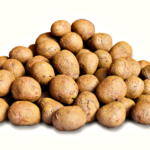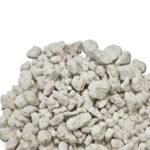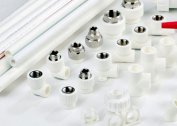Central heating does not always cope with the tasks assigned to it, and autonomous heating will cost too much if energy saving measures are not taken. Warming the concrete floor in a private house or city apartment will help reduce the cost of heating the premises, create a healthy and comfortable microclimate in them. If you have a set of household tools and experience in handling them, you can insulate the concrete floor with your own hands, saving a considerable amount on wage workers. The key to success is the right choice of material and thermal insulation technology.
Types of thermal insulation materials
The construction market is saturated with products that vary in appearance, composition, scope, price and performance.
In order not to make a mistake when buying, you need to decide on such nuances:
- place of work - balcony, balcony, bathhouse, garage, apartment, private house;
- the purpose of the event is to make insulation or install a heating system;
- heat insulation method - internal or external;
- room heating schedule - permanent or periodic;
- budget allocated for repairs.
When choosing a material, you must pay attention to the restrictions that apply to residential and commercial buildings.
Mineral wool
Minvata is an ideal insulation for concrete floors in terms of technical characteristics. The construction market includes rolls and mats made of glass, slag and dolomite stone. The best in all respects qualities are the basalt cotton wool TechnoNIKOL, but its price is the highest. A feature of the material is its hygroscopicity. To avoid moisture swelling, membrane tissues are used that remove steam from the insulation. The elasticity of the mats is used when laying them in a frame in a hurry. Due to this, it is possible to avoid the formation of cracks and additional work to eliminate them.
Styrofoam
Polyfoam has a long and successful history of application in industrial and private construction. Available in the form of plates measuring 100x100 cm with a thickness of 20-200 mm. Plates are composed of many pressed white balls with a porous structure. The material is characterized by the lowest cost among analogues, low density and thermal conductivity. It must be borne in mind that PPT absorbs moisture, which leads to the destruction of its structure. In addition, insects and rodents like to settle in the foam, so it needs to be well insulated.
Extruded Styrofoam
Penoplex is a modification of polystyrene with higher performance characteristics. Open cells allow steam to pass through the slabs, so they have a wider range of applications. The stepped edges of the plates provide a dense seamless connection of fragments in the masonry. Expanded polystyrene is resistant to moisture, temperature changes and is designed for 50 or more years of service.
- Mineral wool
- Styrofoam
- Extruded Styrofoam
Polyurethane foam
Spray foam appeared on the construction market relatively recently, but managed to gain a large army of adherents. Products are divided into domestic and industrial categories. The first includes aerosol cans with a volume of 500-2000 ml, sold in hardware stores. Industrial foam is applied to objects using special compressor equipment and a spray. Once on the base, the suspension foams, increasing in volume by 30-40 times.In this case, the substance fills all the voids and openings, creating a seamless monolithic surface. The material has excellent insulating properties, environmental safety and durability.
Expanded clay
Expanded clay is a porous granule obtained by vulcanizing a mixture of clay and limestone. Bulk insulation is characterized by low thermal conductivity and affordable cost. To achieve the required filling density, part of the granules is crushed, and then added to whole fragments. This eliminates cavities that contribute to shrinkage from vibration. It is necessary to take into account the shortcomings of the material: over time, it swells with moisture and decreases in volume under its own weight. Because of this, every 3-4 years it has to be replaced.
Foam glass
Foam glass is a porous slab with many open cells. In the manufacture, the property of glass to foam at a temperature above 1000 degrees is used. Finished products are durable, environmental friendly and low thermal conductivity. The material is immune to moisture, reactive chemicals and temperature extremes. It is avoided by rodents and insects.
Foam glass does not burn and is not prone to mold. The coating is hard and durable, it can be covered with a laminate using only an intermediate substrate.
- Polyurethane foam
- Expanded clay
- Foam glass
Bung
Cork is a natural environmentally friendly material that is resistant to moisture and temperature extremes. Available in the form of plates up to 2 cm thick and up to 100 cm wide. The cork is characterized by low heat conductivity, density and a relatively strong surface. The disadvantage is that the substance attracts rodents and insects, which can spoil it with its waste products.
Perlite
Expanded perlite sand is characterized by chemical and biological inertness, resistance to moisture, high and low temperature. It is made from volcanic rock and therefore is inexpensive. Perlite is poured between the lag, after which it is rammed.
- Bung
- Perlite
Material Selection Criteria
Floor insulation for concrete slabs must meet the following criteria:
- low thermal conductivity;
- minimum hygroscopicity;
- immunity to temperature extremes;
- environmental Safety;
- resistance to decay, fungus and mold;
- affordable cost;
- the ability to do it yourself.
If one of the qualities does not meet the set of requirements, it can be compensated by the installation of protective or ventilation layers.
Methods of insulation of a concrete floor
You can insulate the concrete floor in a private house in various ways, choosing the most suitable method for specific conditions.
During the construction process, this event is best done before a rough screed. This method will allow you to move the dew point from the foundation, while protecting it from moisture and contact with alkaline soil. Before pouring the mixture onto the ground, it is possible to lay foam or expanded polystyrene plates. Another option is to fill in expanded clay or perlite, which is covered with a cellophane film.
Warming of the concrete floor of the first floor in a private house during the pouring of the concrete mixture is carried out on top of the stove located above the cold basement. This approach allows you to isolate the living room from the cold and prevent heating of the cellar, which is used for long-term storage of products. It is better to insulate the floor with inexpensive PPT, 5 or 10 cm thick, depending on the climate. The hardened coating is the basis for the finish. On a warm floor, you can immediately lay linoleum, tile, engineering or wooden board.
If the height of the ceiling allows, insulation is carried out on top of the concrete slab by creating a lag system.The scheme is made so that it is possible to lay the flooring on the frame without unnecessary scraps.
Warming process
There are two technologies, different in content and final result, with the help of which it is possible to effectively insulate the floor in a residential building. The choice depends on its configuration and the material available.
The dry method is performed in the following sequence:
- Installation of waterproofing is being carried out. It is necessary to protect the structure from moisture that comes from concrete. Choose a film, roofing material or coating composition.
- A frame of boards is fixed to the plate. They are pre-dried, treated with an antiseptic and hydrophobic composition.
- Insulation is added inside the frame. Foam is blown flush at its edges, cotton slabs are inserted by surprise, bulk material is compacted.
- A membrane web is nailed to the logs. The edges of the strips are glued with tape.
- Sheathing is laid. It can be chipboard, OSB, a block house under a polished board.
The wet method consists of the following steps:
- Damp waterproofing.
- Attaching insulation plates to it. The material is staggered and glued to the base. The edges of the plates are twisted with screws.
- The reinforcing cage is made and laid.
- A damper tape is glued around the perimeter of the room.
- The solution is mixed and the screed is poured.
- After drying, the floor surface is leveled and primed.
The final stage is the laying of the finish cladding.














